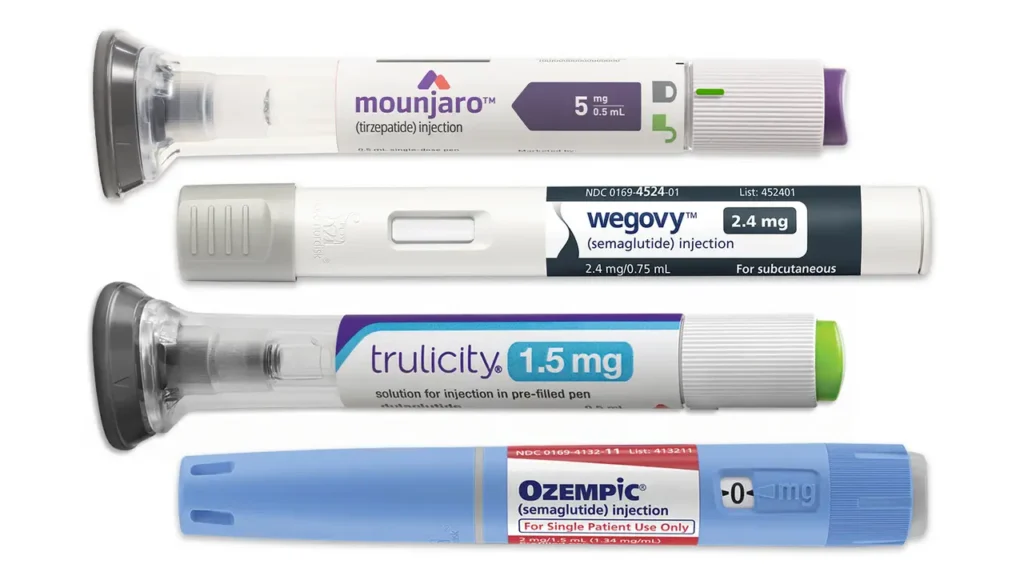Key Takeaways
- Smart bandages incorporate intelligent sensors and controlled delivery systems to track wound status, sense infection onset, and release therapeutic agents, revolutionizing post-lipo care.
- These bandages allow for tailored care by modifying treatment according to immediate information, promoting improved recovery for different skin types and unique requirements.
- With patient data and remote monitoring built in, doctors can follow along and intervene to avoid complications.
- Smart bandages not only reduce infections and scarring and increase comfort, but result in less follow-up visits, thereby reducing healthcare costs.
- Users should adhere to manufacturer guidelines and cleanliness practices to keep the smart bandage effective and safe, with periodic specialist evaluations encouraged.
- With smart bandages, patient education and communication with healthcare providers are essential for optimizing the benefits of these innovative devices and maximizing the healing experience.
By smart bandages that deliver healing factors post lipo using cutting-edge materials that release growth factors or drugs directly to the site. They’re bandages that can monitor the healing process and deliver timed doses where appropriate. Several of them employ sensors to monitor the condition and moisture of the skin, allowing physicians to identify issues early. While others use wireless tech to notify care teams of changes, which can streamline rounds and reduce unnecessary visits. Researchers continue to develop innovations that could reduce the likelihood of infection and accelerate the healing of wounds. To demonstrate how these bandages function and what to anticipate after lipo, the subsequent key benefits sections demystify primary categories and highlight warning signals during healing.
What Are They?
Smart bandages – a futuristic type of wound care that blend basic dressings with tech wizardry. They employ layers containing sensors, gels and thin electronics, all crammed into a form factor that looks and feels like a typical bandage. Primarily, they aim to assist wounds in healing quicker and more safely, specifically following medical steps such as liposuction. These bandages are designed to monitor wounds and transmit live information about the recovery.
Post-liposuction, skin and tissue require recovery from swelling, bruising and minor incisions. Where traditional dressings merely protect and cover, smart bandages monitor factors such as skin temperature, moisture, and pH. For instance, if the wound becomes too moist, which can indicate infection, the band-aid transmits a signal to notify the patient or physician. This aids in identifying issues quickly, so recovery remains on course.
Another huge benefit is that they deliver healing agents directly to the wound. These curatives may be growth proteins, anti-swelling compounds, or even numbing gels. A smart bandage can keep these agents in small capsules that pop open only when necessary, like if the wound is too dry or begins to swell. That way the wound receives what it requires when it requires it, without constantly having to change bandages. Say, for instance, a liposuction patient could wear a smart bandage that emits additional growth proteins if healing lags, assisting new tissue to develop more quickly.
Smart bandages even monitor wound healing. They frequently tie in with smartphones to display trends. That way doctors and patients can identify whether healing is sluggish or if there’s danger of infection. For individuals in locations where doctor appointments are difficult, this technology can minimize travel requirements, as certain checks can be conducted from home.
The Healing Mechanism
Smart bandages employ a multi-tiered approach to accelerating healing following liposuction. These dressings don’t merely dress wounds. They perceive, react, and evolve, providing attention that shifts to every individual’s requirements.
1. Sensing Wounds
Smart bandages frequently incorporate sensors that monitor moisture, temperature and even the pH of the wound. Moisture sensors assist indicate if a wound is too wet or dry, both of which impede recovery.
Infection begins, early indicators, such as a temperature or pH spike, can appear. These sensors provide clinicians with a transparent picture in real time. Infection early, these signals help catch problems before they get worse. Temperature monitoring is critical as well. Maintaining wounds at optimal warmth can support cellular regrowth and reduce edema risk.
2. Releasing Factors
These bandages contain healing compounds, like growth factors or antibiotics, in microscopic reservoirs. When sensors detect changes–such as low moisture or infection–the bandage can release precisely the appropriate dosage of these agents.
Growth factors aid in development of new cells. Antibiotics combat bacteria. That bandage only delivers what’s needed, which translates to less side effects and less waste. Sometimes, the blend of healers can be tuned to the patient’s personal healing rate, allowing a more personalized care.
3. Customizing Care
Smart bandages let care fit the person, not just the wound. By gathering information, they’re able to adjust how much medication is dispensed or how frequently the wound is examined.
This flexibility applies to a vast panel of skin types, ages and health concerns. It assists them to adhere to their treatment plans because the bandage ’knows’ when to aid, minimizing any challenges or stress during recovery.
4. Monitoring Progress
These near-constant checks enable the bandage to detect subtle changes, often before a patient or physician does. All this data can be forwarded to clinicians, who can monitor patterns and identify if healing plateaus.
This remote updating allows nurses or physicians to intervene quickly if necessary. This rapid response can reduce extended visits to clinics and aid in maintaining recovery momentum.
5. Material Science
New smart bandages are implanted in soft, flexible fabrics that breathe and move with the body. They eschew hard edges and remain cozy even after days of wear.
Most are crafted with skin-friendly fibers to reduce the risk of allergies. Future breakthroughs make these dressings lighter, smarter, and even more useful.
Post-Lipo Benefits
Smart bandages are revolutionizing post-liposuction recovery. They’re not just for covering wounds. These bandages provide healing factors directly to the skin, which helps accelerate the recovery and makes the entire process safer and more comfortable.
- Faster healing times as a direct result of growth factor release
- Reduce infection risk by maintaining a clean, moist wound
- Less scarring from steady wound care and controlled healing
- Better comfort for patients during the recovery process
- Fewer follow-up visits needed with remote wound monitoring
- Healthcare cost savings from fewer complications and less clinic time
- A smoother, more toned look after fat is removed
- Boost your self-esteem and confidence with an expedited, enhanced recovery.
- Greater patient satisfaction with less pain and worry
Wound infection and scarring are two of the biggest fears post-liposuction. With intelligent bandages, sensors monitor wound status and administer medication or growth factors appropriately. This reduces infection risk by maintaining sterility and alerting care teams if things shift. These healing factors assist the skin to close up with reduced scarring. That translates smoother skin and less scarring, which can be a game changer for individuals seeking to appear and feel more radiant post-surgery.
Another advantage is improved patient satisfaction. Recovery is never easy, but smart bandages have us experiencing less pain and swelling. Because the bandages keep it moist and protected, patients can return to normal life sooner and with less discomfort. This more controlled healing process usually results in enhanced outcomes–better body contouring, diminished cellulite and smoother skin tone. Others experience improved mobility and reduced joint stress post-lipo, which increases confidence and simplifies life.
Smart bandages may reduce these follow-ups. As the bandages monitor healing and report back to care teams, patients only have to visit if necessary. This time and cost savings all around. Less trouble and quicker healing over time translates into smaller medical bills and a more enjoyable overall experience.
Risks and Realities
Smart bandages that deliver healing factors post-lipo are progress, but hard realities and limitations. People have to know what these are before they use them or select them for care. Below is a short checklist to help weigh the risks and facts:
- Sensors can degrade quickly in a wet wound, which is typical post-lipo. This is what can cause false readings or missed issues.
- Conductive inks sensors can have their behavior altered if they are pulled or bent. This can interfere with the bandage’s wound heat tracking.
- The wound site tends to be protein rich and remains moist. This can desensitize smart bandages, causing them to fail prematurely.
- Chronic wounds, such as in diabetics or poor circulation, heal slowly. Most slow-healing wounds, such as venous leg ulcers or diabetic foot ulcers, take more than a year to close, even when dressed with novel bandages.
- Healing requires a sufficient oxygen level in the tissue. Research demonstrates a minimum of 20 mmHg tissue oxygen is necessary. Chronic wounds are often below this, which drags out healing regardless of how clever the bandage.
Smart bandages aren’t a panacea. They’re instruments to assist, but they can’t mend all of wound care. They don’t substitute for a sterile, moist healing space, demonstrated to promote the regrowth of blood vessels and accelerate healing. If wounds dry out, they heal slower, so bandages have to hold them moist but not too wet.
Daily attention and inspections are required. The bandage has to be frequently changed and inspected for infection or leaks. If the bandage ceases to be effective, users or caregivers might not be aware unless they monitor the wound for indicators like smell, color, or swelling.
Professional guidance is crucial. Doctors or nurses need to monitor the wound regularly, look for infection, and ensure the bandage is performing as expected. In chronic wounds, individuals can experience pain, impaired mobility and even depression. These you can’t cover with bandages.
Proper Application
Similarly, smart bandages for post-liposuction healing require proper application to function effectively. The correct swabbing allows wounds to properly heal, enables the bandage’s properties to work, and reduces chances of complications.
- ALWAYS read & follow the maker’s instructions. Every smart bandage is different — they each have their own setup, wear time and how to verify it works. Makers provide directions for applying the bandage, replacing it, and verifying sensors. Skipping steps can mean the bandage doesn’t do its job, or can even cause skin issues.
- Skin care prior to applying the bandage is important. Wash hands and clean the wound and dry the skin. The skin’s pH, typically 4 to 6, aids in healing. Some smart bandages include dyes or sensors to indicate pH changes. If pH falls outside this range, it could indicate infection or delayed healing. Observe color shifts or sensor measurements to detect issues quickly.
- Some smart bandages employ tiny needles or microneedles to administer healing agents to the skin. These needles can deliver up to 70% of medicine to live tissue, compared to just 1% with gels alone. Verify that the microneedles are flush with the skin. Any gap= less medicine gets in.
- Keep track of the wound’s temperature and oxygen. Smart bandages can have sensors or color strips to show if the wound is too cold or not getting enough air. Low temperatures or poor oxygen can slow down healing. If the bandage shows odd readings, talk to your care team.
- Certain bandages incorporate specialty gels or components that provide a medicinal release when the skin heats up or cools down. These assist regulate the pace and quantity of medication injected in to the laceration. Ensure that the bandage lays flat and has complete contact for the sensors to operate appropriately.
- Periodic reviews count. Check for leaks, skin rash or sensor alerts. Other bandages employ novel tech to detect proteins or infection directly within the wound. If you notice a sign from the bandage—such as the sensor changing color—replace the dressing or contact your provider.
- Wash hands and instruments each time you attend to the wound. Proper hygiene reduces exposure to infection. Never reuse or touch the inside of bandages.

The Human Element
Smart bandages are the future after liposuction, but the key is having hands-on, trained healthcare professionals. Nurses and doctors must inspect the wound, select an appropriate bandage, and monitor for infection. They need to understand when to switch the dressings and how to identify if the healing process is not proceeding properly. Practice counts because some wounds take longer to heal than others. For instance, if the skin’s pH shifts away from the typical acidic zone of four to six, it can impede healing or allow bacteria to proliferate. That’s information providers who know can tailor care for each individual, reducing the chances of issues such as infection or chronic wounds developing.
Just as important, is educating patients. Most individuals don’t even know how to apply these smart bandages once they go home or what to look for. Easies guides, explicit instructions and hands-on demos can go a long way. When patients understand why a moist wound environment promotes skin regeneration or why warmth matters, they’ll adhere to a care plan. For example, wounds left too dry or to the cold don’t heal well and get infected. Chronic wounds – particularly those that persist for months – can result in stress, anxiety, or even depression. Individuals with restricted mobility, such as pressure ulcer patients, are advised to learn early indicators and how to avoid additional damage.
Open discussion between patients and providers is essential. They have to feel comfortable to call with questions about pain, swelling, bandage changes. These regular check-ins catch problems early, such as if the wound pH begins to shift or if healing decelerates. When patients feel listened to, they stay with their care plan and notice issues earlier.
There is a mental component as well to high-tech recovery. Smart bandages have the power to make patients more hopeful and in control of their healing. Smart stuff can relieve stress for recovering patients, providing insights and motivation. This push is critical, because slow or difficult recuperation can drag on and affect your mood and lifestyle.
Conclusion
Smart bandages deliver healing factors post lipo They function by delivering healing factors directly to the area, which can translate into reduced discomfort and quick skin repair. Read the life-changing experiences of our customers. These bandages make life simpler after surgery. Not all cases will be so neat, so consult your doc before you attempt them. Keep an eye out for skin modifications and wear the bandage as the manufacturer notes. Fresh innovation in treatment continues! To find out or share your own story, connect with a health pro or an online forum. Be inquisitive, disseminate, assist others recover ins clever.
Frequently Asked Questions
What are smart bandages used for after liposuction?
They promote accelerated recovery and reduced infection risk as well as assist in accelerating wound healing by delivering a targeted, regulated healing environment.
How do smart bandages work to promote healing?
Smart bandages that deliver healing factors post lipo They can sense problems such as infection or dryness, then deliver drugs or moisture, allowing wounds to heal more quickly and safely.
Are smart bandages safe to use on all skin types?
Although most smart bandages are for all skin types, some folks might encounter irritation. You should use it under the guidance of a healthcare provider prior to use, particularly if you have sensitive skin or an allergy history.
What are the main benefits of smart bandages after liposuction?
Smart bandages can accelerate healing, prevent infection and deliver ongoing wound care. They reduce the number of times you have to change bandages, which is way more comfortable.
Do smart bandages replace traditional wound care?
Smart bandages augment but don’t completely supplant traditional wound care. They are typically applied in conjunction with conventional therapies to offer localized assistance and enhance the healing process.
Are there any risks or side effects from using smart bandages?
Certain users might develop skin irritation, allergic reactions or discomfort. In rare cases, malfunction can delay healing. Be sure to heed medical advice and watch for signs of issues.
How should smart bandages be applied after liposuction?
Adhere to your doctor’s advice. Generally, the skin needs to be clean and dry. As long as the bandage adequately covers the wound, check it for signs of irritation or infection.








